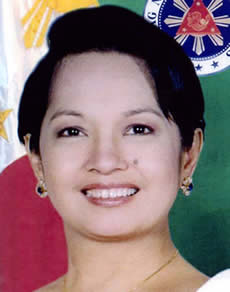| Philippine Revolution (1986) |
A popular, spontaneous, nonviolent, and distinctly religious movement restored democracy to the Philippines, on February 22–25, 1986. After nearly 400 years of colonization by Spain and the United States of America in the first half of the 20th century, the Philippines enjoyed a democratic form of government until Ferdinand Marcos became president in 1965. However, in 1972 Marcos declared martial law, citing communist insurgency but in reality because he faced the prospect of defeat in the presidential elections.
Martial law (lifted in 1981) was disastrous for the country. Government-sanctioned atrocities occurred frequently, the media was rigidly controlled, and anyone suspected of being a dissident was imprisoned.
One such political prisoner was Benigno Aquino Jr. (nicknamed "Ninoy"), a brilliant politician who was elected to the National Senate at the age of 35 and became Marcos’s most serious rival to the presidency. He was imprisoned for eight years.
 |
In 1980 Aquino was allowed to travel to the United States for surgery, and, for the next three years, he lived in Cambridge, Massachusetts, with his family. But he was assassinated in 1983 upon returning to the Philippines.
An independent panel investigating his murder put the blame on a military conspiracy involving "some of the country’s highest ranking officers", but without giving any names. The event galvanized the nation as millions of Filipinos mourned his death and led to the "People Power" movement.
However, it took three more years before People Power would become a reality. In the interim, opposition to the Marcos regime became more frequent and vocal. Public rallies and demonstrations were often met by military reprisals. Eventually the military, too, became divided, with some calling for reform.
Late in 1985 Marcos called a "snap" presidential election on February 7, 1986. It was a move calculated to restore his popular mandate. Many people welcomed this, although it was a foregone conclusion that there would be massive electoral fraud. Corazon ("Cory") Aquino, the assassinated leader’s widow, with neither political aspirations nor experience emerged as the popular candidate.
Expectedly, Marcos declared himself the winner. But the People Power nonviolent revolution would eventually triumph by the defection of two men in Marcos’s camp: the civilian defense minister and a high-ranking general of the armed forces.
They were supported by the archbishop of Manila, Cardinal Jaime Sin, who called on Filipino civilians for help. At first a trickle, then hundreds of thousands of ordinary Filipinos from all economic strata responded, converging on the streets with no weapons, calling on the advancing soldiers and marines to join the protest.
First Woman President
Within four days, the number of defecting soldiers made it clear that Marcos no longer controlled the military. The United States asked Marcos to step down from power and to desist from military action. Fearing for their lives, Marcos and his family were flown out of the country and took refuge in Hawaii. Corazon Aquino was inaugurated as president on that day, the first woman president of the Philippines.
The popular and nonviolent People Power revolution of 1986 restored democracy, but it did not solve all the problems of the country. Twenty years later, the country still faces many political, economic, and social ills. But what People Power demonstrated was the tabiat superiority of nonviolent and prayerful resistance to political tyranny and tabiat evil.





